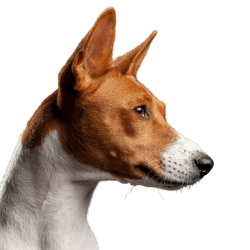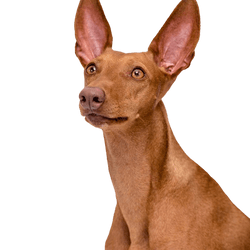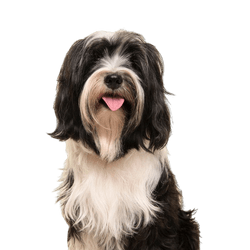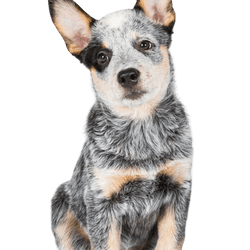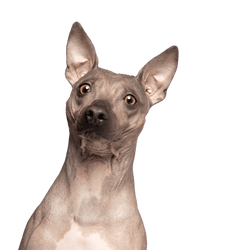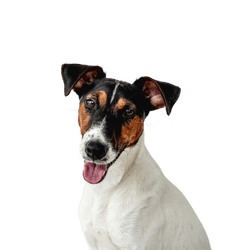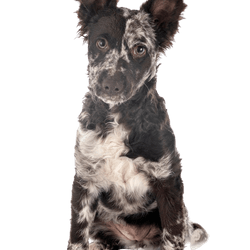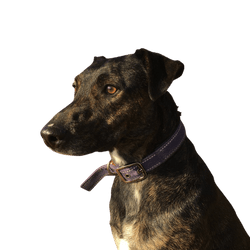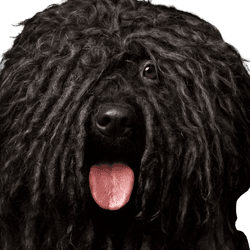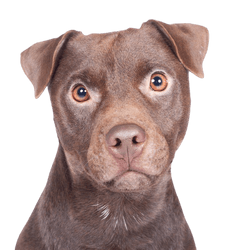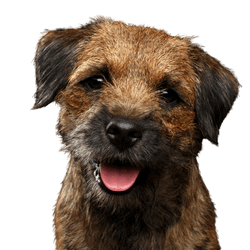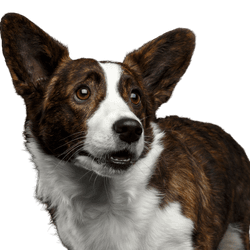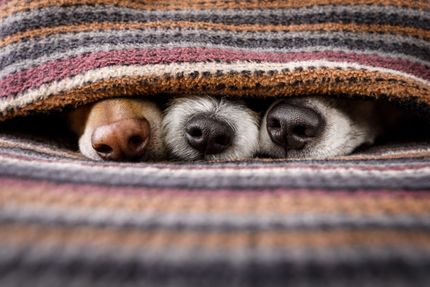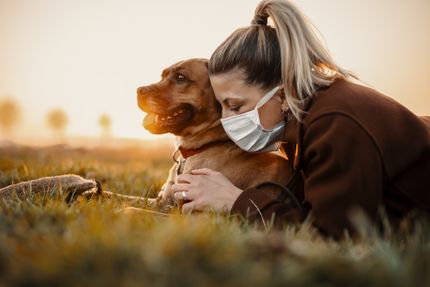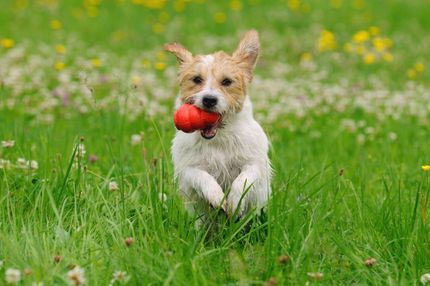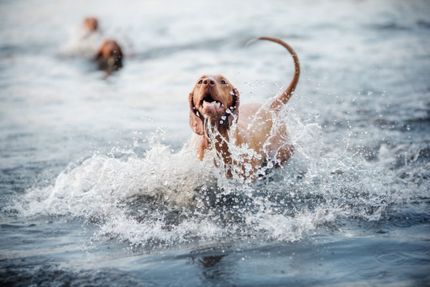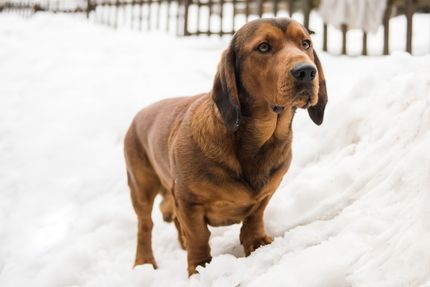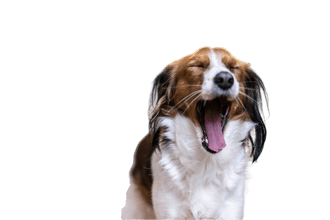
Kooikerhondje Breed description: Character & Co
Kooikerhondje
Facts & Origin
What is the origin of Kooikerhondje?
The name Kooikerhondje allows us to draw conclusions about its original use: in its native country Holland, Kooi is the name for a bird-catching facility. This is exactly what the breed was used for: along the many lakes and canals of the Netherlands, hunters set traps for waterfowl. The clever dogs used playful movements to attract ducks and other animals. This trick made it possible to catch dozens of ducks in no time at all. According to reportings the breed was already very popular in the 16th century. This can be proven by paintings of old Dutch masters like Jan van Seen or Hendrik Martens, which portrayed Kooikerhondjes. Even on the grave of William von Oranien, who is considered a folk hero by many Dutch people, a statue of Kooikerhondje can be found. The breed's ancestors were Spaniels, so you will find a resemblance in your four-legged friend. They were also passionate about water hunting. When hunting with decoys was finally banned in Holland for animal welfare reasons, the population of the Kooikerhondje decreased rapidly. In the 1930s, the breed almost became extinct. It is thanks to Baroness van Hardenbroek van Amerstol that it still exists today. She used pictures to search for remaining breed representatives and found the female Tommy in Friesland. With her, the breeding would continue in 1942, although from a small pool of only 25 animals. In 1971, the international federation FCI recognised the breed.

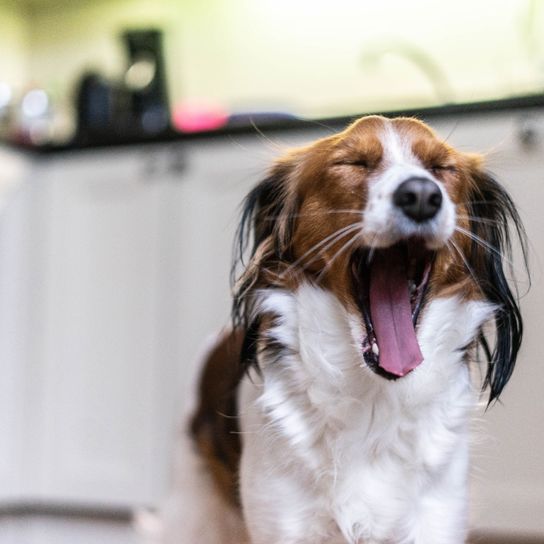
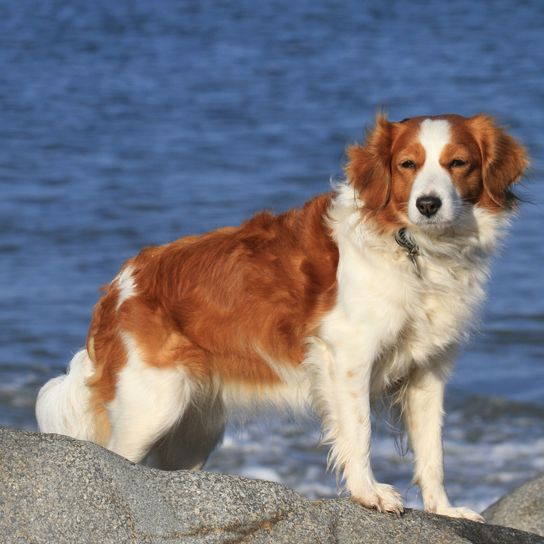
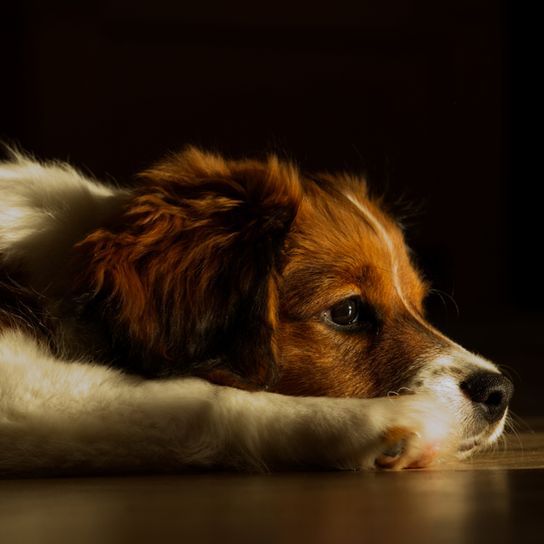
| Alternate Name | Kooiker |
| Origin | Netherlands |
| Life expectancy | 11 - 15 years |
| Care requirements | low-maintenance |
| Activity level | average |
| FCI group | Flushing Dogs |
| AKC group | Sporting Group |
| KC group | utility group |
Attitude, character and temperament of the breed
What are the typical character traits of the Kooikerhondje?
The Kooikerhondje is very temperamental and has a great urge to move. Therefore, it is best suited for active owners who like to do a lot of activities with him. The animals do not like to be left alone: Ideally, you can take your furry friend with you to work, where it will soon become the darling of your colleagues. The breed is known for its winning and people-orientated nature. If you train the four-legged friend well and take them for exercise during your free time, they will be a quiet companion at home. Thanks to its light weight and practical size, it fits into smaller dog boxes and can also accompany you on holiday. However, the temperamental bundle wants to go out in all weather conditions. You should make sure your dog gets at least an hour of exercise. The breed also proves to be a patient and funny playmate for children.
What are the breed characteristics of the Kooikerhondje?
The approximately knee-high animals show themselves very affectionate and bind themselves closely to you after a short period of getting to know you. If you are new to the breed, you better inform yourself about the Kooikerhondje's characteristics. This includes that they question rules and become a little rebellious if they are not guided in a consistent way. However, if you face them with a confident position from the start and encourage positive behaviour with lots of praise, you will make a friend for life. It is also characteristic that the animals remain playful until old age.
Character
Usage


Health and breeding information
What are typical Kooiker diseases?
With the Kooikerhondje there is a certain risk of them developing the following hereditary diseases:
- Patella luxation: a change in the patella caused by a congenital weakness in the knee joint
- Degenerative Myleopathy: Occurs during the first three months of life and leads to progressive paralysis
- Von Willebrand disease: a bleeding disorder, can lead to increased bleeding of the gums and other symptoms
- Eye diseases
- Epilepsy: increased risk for seizures
What should be considered in regards to Kooikerhondje breeding?
Due to the low population of the Kooikerhondje in the 1940s, the breed was increasingly inbred. When you look at a Kooikerhondje puppy at the breeder, have all the papers of the parents shown to you and check the past generations to see if the names are repeated. Serious Kooikerhondje breeding results in healthy and strong animals, which will surely give you pleasure for a long time.


Appearance and coat of the Kooiker?
The Kooikerhondje is approximately as tall as it is long and is characterised by its square body shape. The medium length and slightly curled coat is also very distinctive. On a white coat their typical red spots are visible. Some breed representatives have "earrings", i.e. black ear tips. The well feathered tail is carried straight or over their backs. Under the topcoat they have a protective undercoat to warm them. Regular brushing pays off, so that the dead hair does not collect in your home.
What size is a Kooiker?
A Kooikerhondje grows to a height of up to 70 centimetres.
How much does a Kooikerhondje weigh?
The Dutch Kooikerhondje can weigh up to 12 kilograms.
What is the life expectancy of the Kooikerhondje?
A Kooikerhondje reaches an age of 11 to 15 years.
| Fur length | medium |
| Fur | wavy |
| Ear shape | Floppy Ear |
| Tail | fanned out |
| Anatomy | dainty |
| Size ♀ | 35 - 40 cm |
| Weight ♀ | 7 - 11 kg |
| Size ♂ | 35 - 40 cm |
| Weight ♂ | 9 - 11 kg |
| Suitable For | Beginner |
Colors
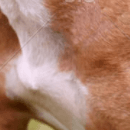
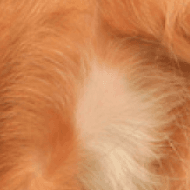
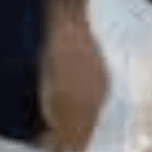



Known Diseases
Epilepsy
Definition: Dog has epilepsy if, for example, at least two epileptic seizures occur more than 24 hours apart.
Myelopathy
Degenerative myelopathies of dogs are a series of slowly progressing neurological diseases associated with destruction of the spinal cord. These diseases are associated with slowly progressive movement disorders of the hindquarters.
Patellar luxation
Patellar luxation is the term used to describe a displacement of the kneecap, which is one of the most common causes of lameness in dogs.
Eye diseases
Often occur with allergies and intolerances.
Other medium dogs
Useful Articles
You can find articles that might interest you in the dogbible blog to match your favorite breed.
Visit our magazineto stay up to date on dog trends.
To find out more, view our Privacy Policy
Find here the breed that suits you and find out what character traits it has. Here you can also learn more about the origin, size and weight of your favorite breeds.
Matching your favorite breed, you'll find articles that might interest you on the dogbible dog blog.
Merle - the special color in certain dog breeds
Heart disease in dogs - diagnosis & control
Dog eats pig bones - is it dangerous? Everything you need to know about bones and dogs
